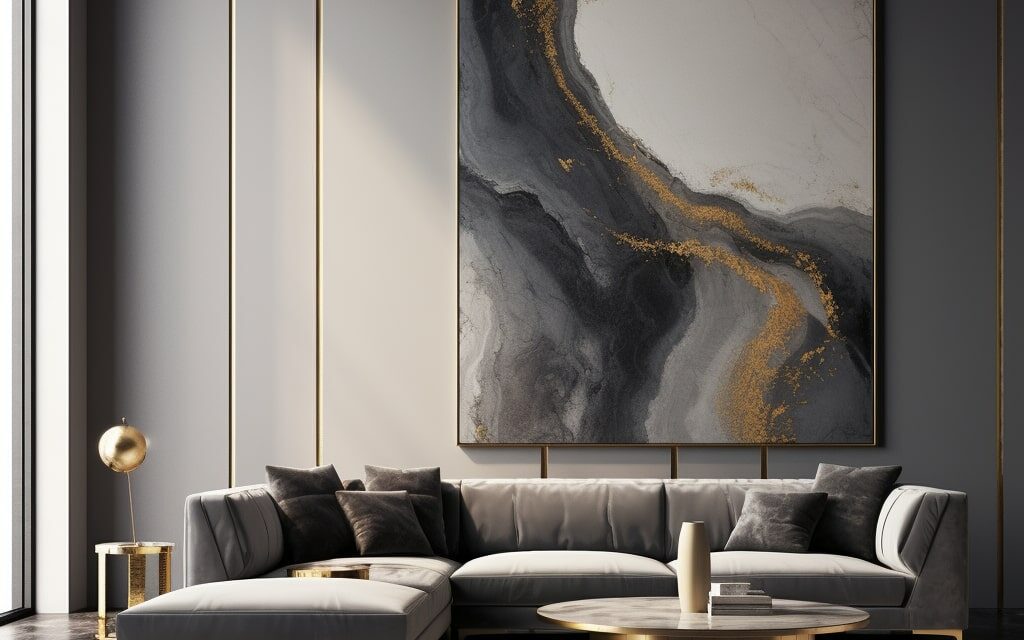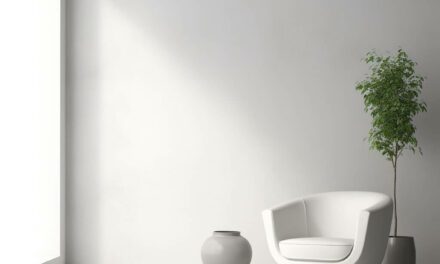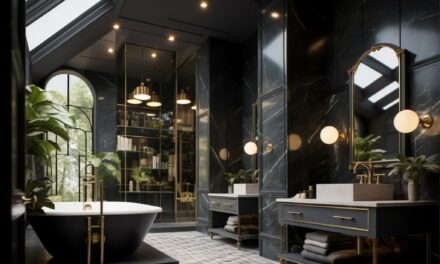The concept of gradation in interior design refers to the gradual transition of visual elements within a space. From color schemes to furniture placement, the careful use of gradation can create a sense of visual depth and harmony that enhances the overall aesthetics and functionality of a room.
But what is gradation exactly? And how can one achieve it in their interior design projects? In this article, we’ll explore the different techniques and benefits of using gradation in interior design, as well as provide practical tips and tricks for incorporating it effectively.
What Is Gradation in Interior Design?
Gradation is a powerful tool in interior design that can be used to create a sense of visual depth and interest within a space.
By gradually transitioning from lighter to darker hues, increasing or decreasing the size of elements, and introducing varied patterns or textures, a designer can create a specific atmosphere that aligns with the client’s tastes and preferences.
Size Variation
One of the most common techniques used for gradation is size variation. By introducing objects of varied sizes within a space, designers can create a sense of progression that draws the eye towards a specific focal point.
| Objects | Size (Small to Large) |
|---|---|
| Vases | 6″, 8″, 10″ |
| Pillows | 12″, 16″, 20″ |
| Pictures | 8×10″, 11×14″, 16×20″ |
Using size variation can be an effective way to visually separate different areas of a room, such as a sitting area and dining area in an open-concept space. However, it is important to maintain a sense of balance and avoid overcrowding the space.
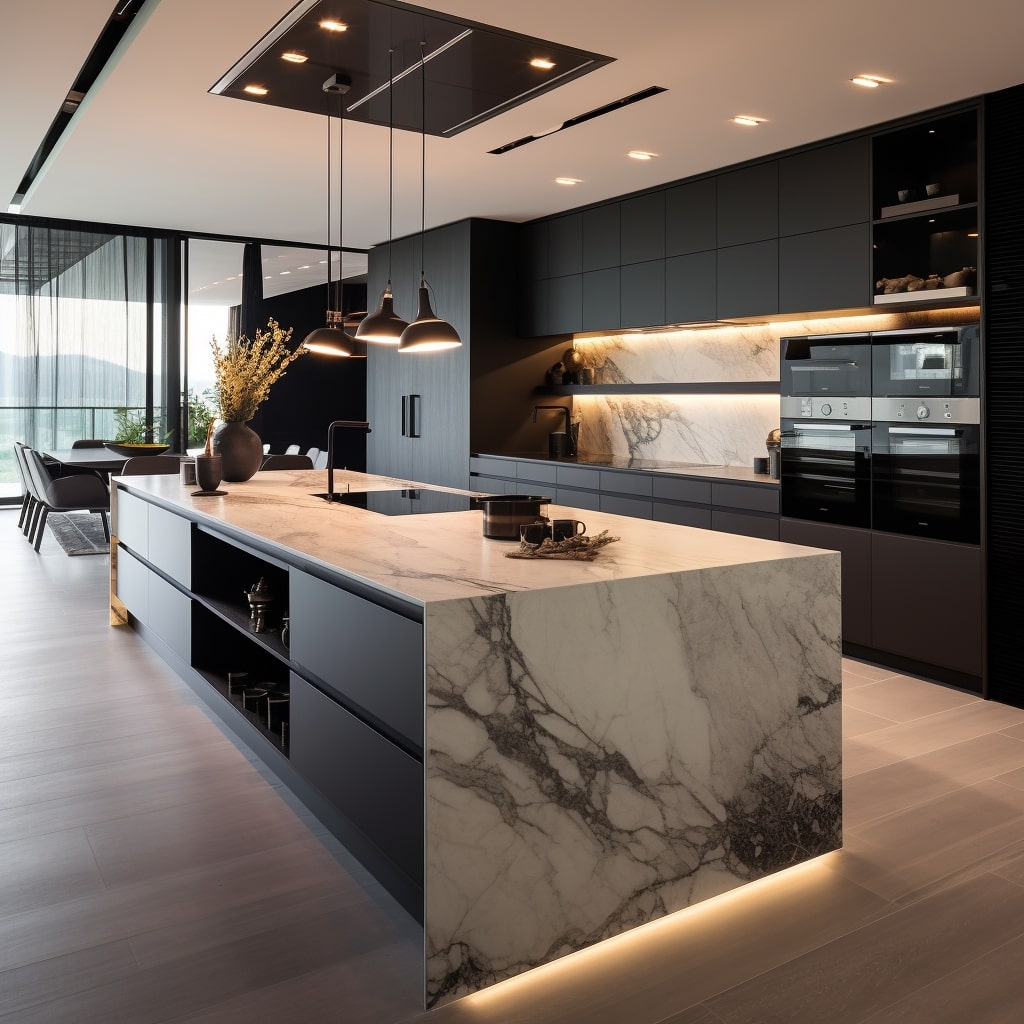
Color Progression
Another popular technique used for gradation is color progression. By introducing a gradual shift in color, designers can create a sense of visual interest and depth. This technique can be used to create a soft, soothing ambiance or a bold, contemporary vibe.
When selecting colors for color progression, designers often use colors that are adjacent to each other on the color wheel, such as blue and green. They may also use a monochromatic color scheme, where different shades of a single color are used to create a seamless transition.
Spatial Arrangement
Spatial arrangement is another technique that can be used to create a sense of gradation. By arranging objects or furniture in a specific order, a designer can create a gradual transition or progression within a space.
For example, a designer can arrange a set of chairs at increasing angles to create a sense of motion and energy. Similarly, arranging objects in a diagonal pattern can create a sense of visual depth and interest.
Overall, understanding these techniques can help designers achieve a sense of gradual transition and harmony within a space. By carefully selecting and arranging elements, designers can create a visually appealing and functional space that aligns with their client’s needs.
The Importance of Gradation in Interior Design
Gradation is a powerful design concept that can significantly impact the look and feel of an interior space. By creating a sense of progression and visual depth, gradation can enhance the aesthetics, functionality, and overall experience of a room.
One of the key benefits of using gradation in interior design is how it can create a sense of harmony and balance within a space. When elements are arranged in a gradual progression, the eye is naturally drawn from one point to the next, creating a cohesive and unified design scheme.
Moreover, gradation can be used to create specific moods and emotions within a space. For example, a gradual transition from warm tones to cool tones can create a calming and serene ambiance, while a sudden contrast between light and dark can evoke a sense of drama and excitement.
Finally, gradation can also be used to emphasize specific design elements within a space. By gradually increasing the size or intensity of an element, it becomes a focal point that draws the eye and captures attention.
Related: The importance of interior design.
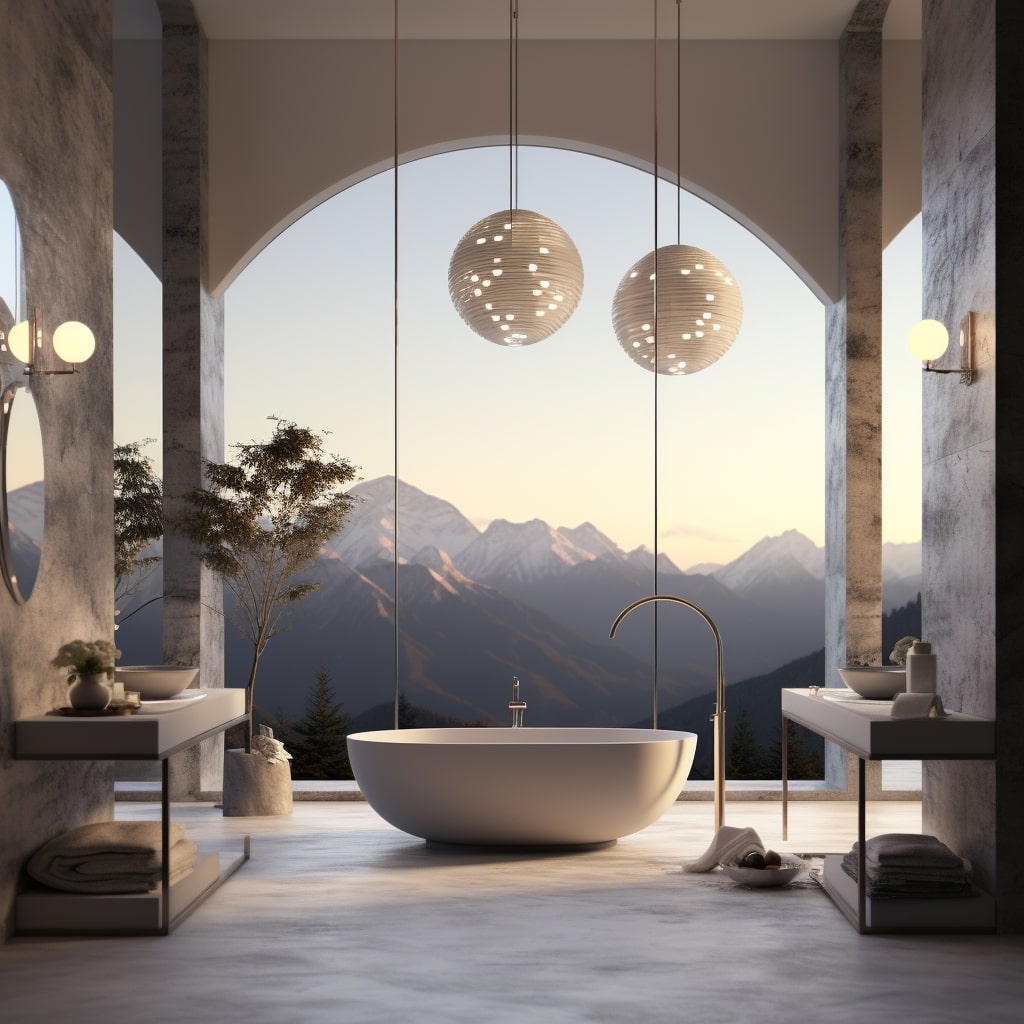

Achieving Gradation in Interior Design
Creating a gradual transition within a space can be achieved through careful consideration of several factors. Here are some practical ways to achieve gradation in interior design:
Color Scheme Selection
Choosing a color scheme that gradually transitions from one color to the next can create a sense of depth within a space. For example, using shades of blue that gradually become lighter or darker can create a calming and cohesive atmosphere.
Furniture Arrangement
Gradation can be achieved through the placement of furniture within a space. By arranging furniture from larger to smaller or gradually changing the shape of furniture, a sense of depth and visual interest can be created. Consider using a mix of large and small pieces to create a cohesive and balanced appearance.
Related: What is opposition in interior design?
Lighting Techniques
The use of lighting can also contribute to the gradation effect. By strategically placing lighting fixtures throughout a space, a gradual transition from light to dark or vice versa can be achieved. Dimmer switches can also be used to control the intensity of the light and create a more dynamic and visually interesting environment.
By considering these factors, you can achieve a balanced and harmonious visual progression within your interior design projects.
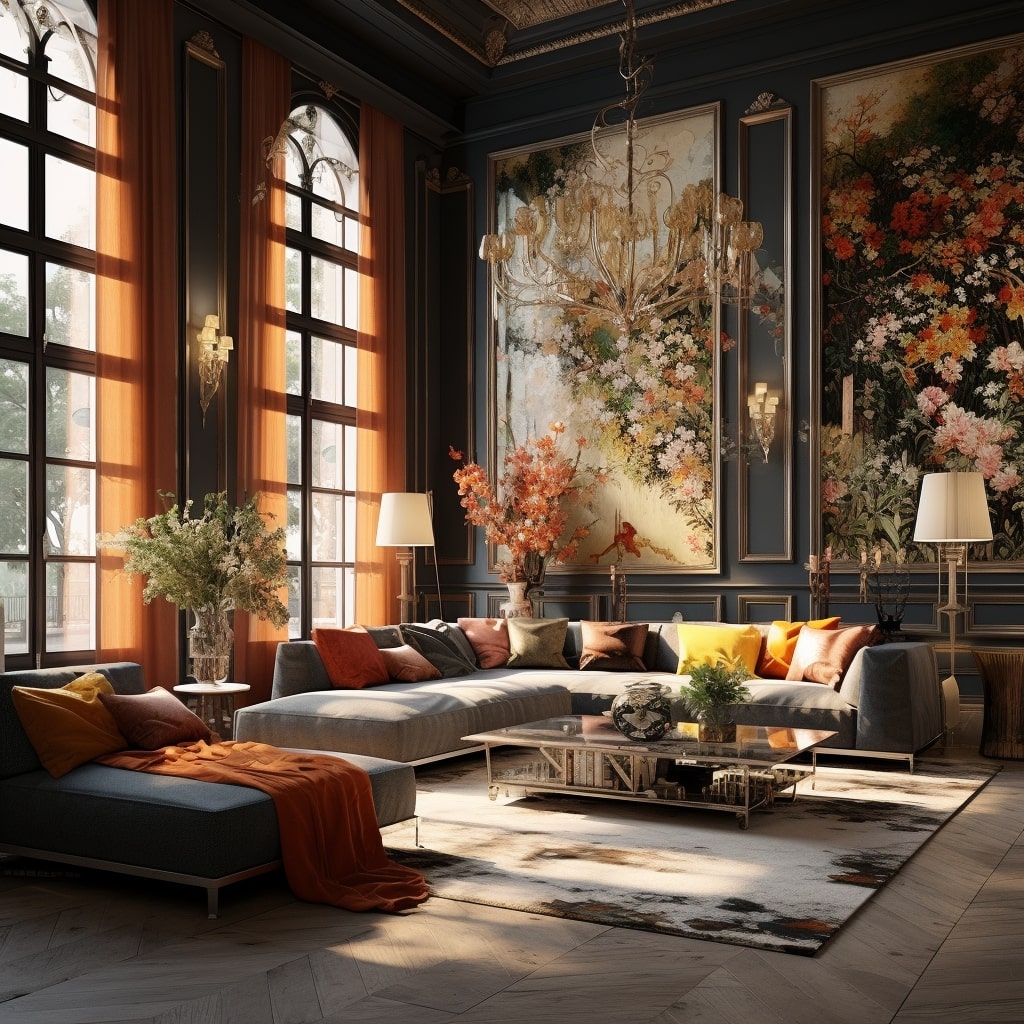

Creating a Sense of Gradation in Interior Design
Gradation in interior design goes beyond just size and color. With the careful arrangement of elements, designers can evoke emotions and create a sense of harmony, making spaces feel more welcoming and comfortable.
One way to achieve a sense of gradation is through the use of textures and patterns. Applying layers of similar but distinct textures, like a woven rug with a plush throw, creates a gradual transition that adds depth to a room. Similarly, patterns that gradually increase or decrease in scale can create a sense of progression and lead the eye through a space.
Lighting is another important factor in creating a sense of gradation. Use of multiple light sources of varying intensities can create a range of shadows that add depth and texture to a space. Wall sconces, floor lamps, and table lamps can all be used to create a soft transition between light and shade.
Lastly, the placement of furniture can also create a sense of gradation. Grouping furniture based on size and creating a gradual transition from larger to smaller pieces, and experimenting with the scale of your designs, can create a sense of progression and guide the eye through the space.
By using these techniques, interior designers can create spaces that are cohesive, visually interesting, and provide a sense of harmony and comfort for those who inhabit them.
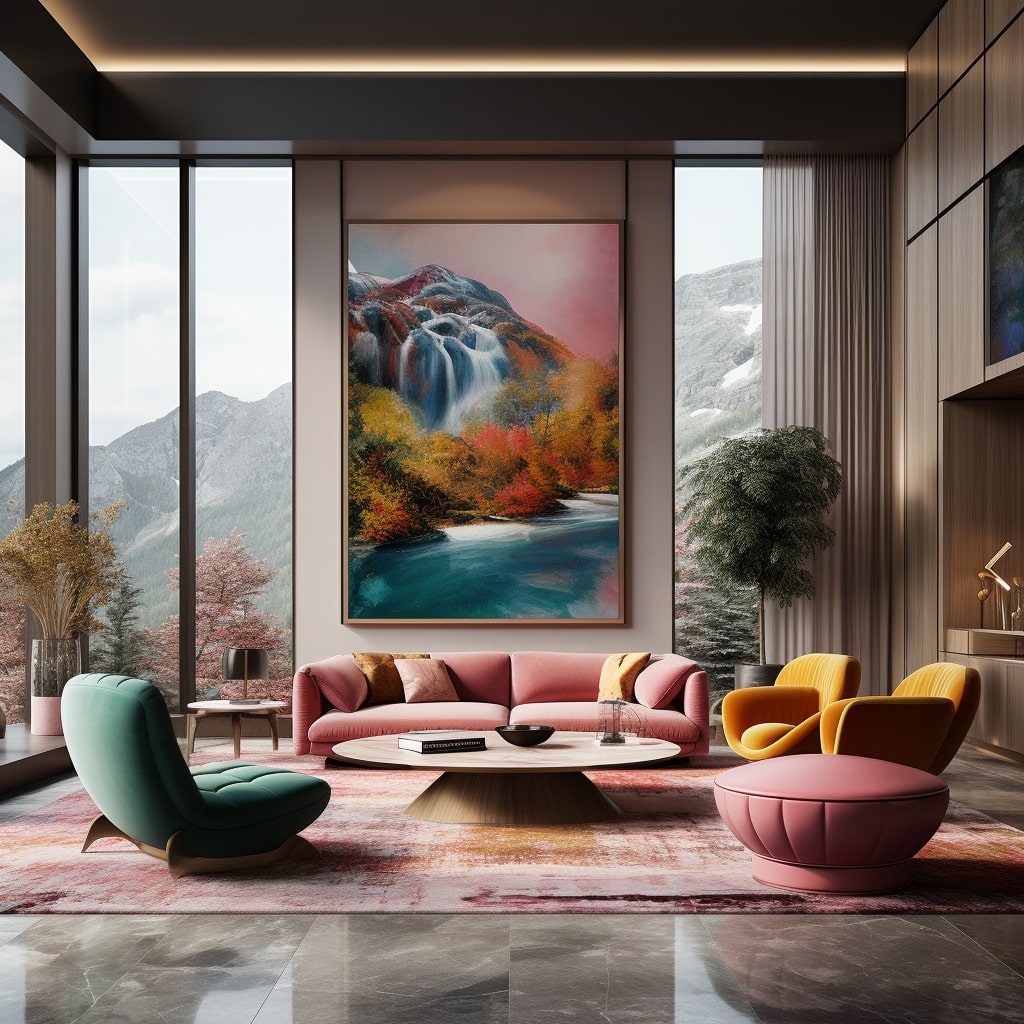

Exploring Color Gradation in Interior Design
Color is one of the most powerful tools in interior design. It has the ability to evoke specific emotions, enhance certain moods, and create a welcoming atmosphere. When used effectively, color can also contribute to the creation of visual depth and harmony through color gradation.
What Is Color Gradation in Interior Design?
Color gradation refers to the gradual transition of color shades, hues, or intensities in a space. It involves the use of a range of colors that are related to each other, creating a visual progression that adds interest and depth to a room. Color gradation can be achieved through a variety of techniques, including:
- Using a monochromatic color scheme that incorporates various shades of the same color.
- Using an analogous color scheme that includes colors that are adjacent to each other on the color wheel.
- Using a complementary color scheme that involves using colors that are opposite each other on the color wheel.
- Using a gradient or ombre effect that creates a smooth transition from one color to another.
The Benefits of Using Color Gradation in Interior Design
The use of color gradation in interior design can have numerous benefits, including:
- Creating a sense of visual depth and dimension in a space.
- Adding interest and complexity to a room’s color scheme.
- Evoking specific emotions or moods, such as calmness or energy.
- Enhancing the overall aesthetics and ambiance of a space.
Tips for Incorporating Color Gradation in Interior Design
When incorporating color gradation in interior design, consider the following tips:
- Start with a base color and gradually introduce shades or hues that are related to the base color.
- Use different textures and finishes to add depth and interest to the color scheme.
- Create a focal point in the room by using a bold or contrasting color.
- Consider the effect of natural light on the colors in the space, and adjust accordingly.
When used properly, color gradation can be a powerful tool in creating a visually appealing interior design that evokes specific emotions and enhances the overall ambiance of a space.
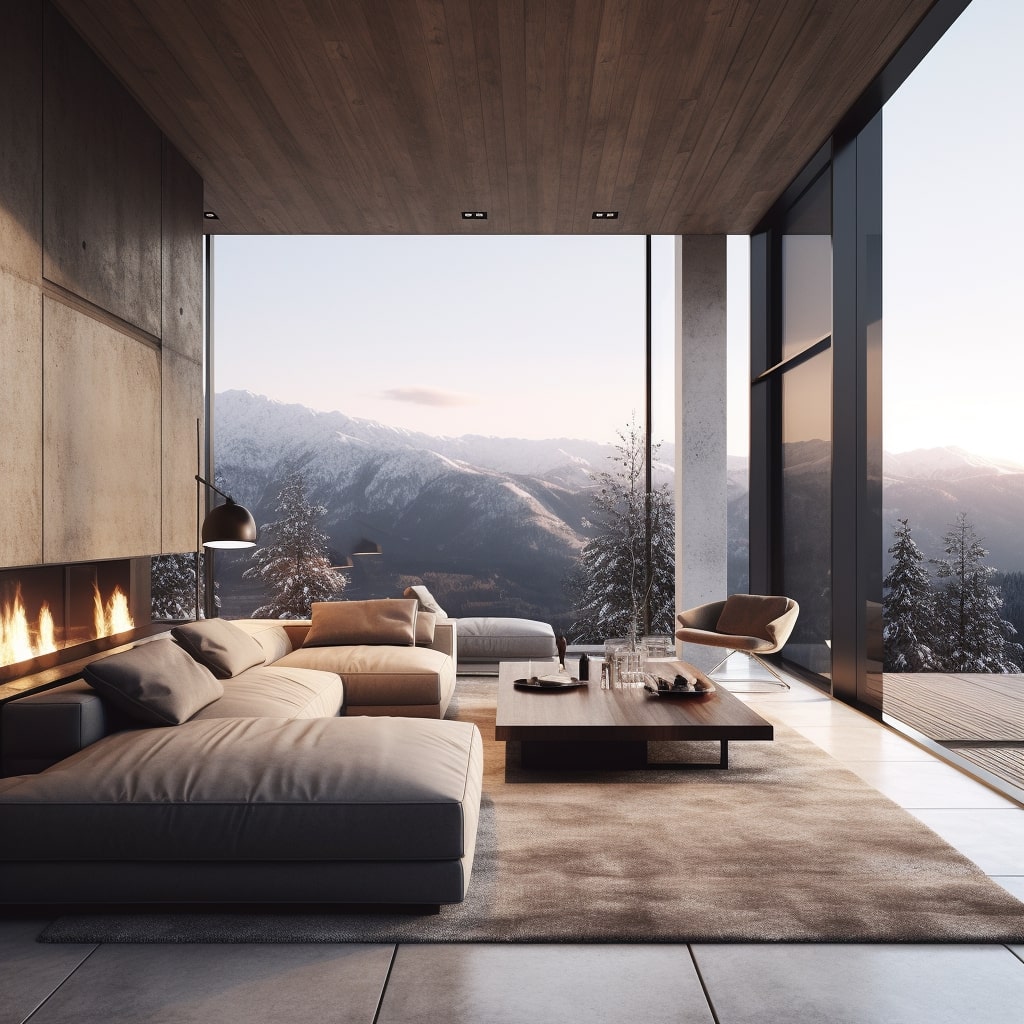

Using Light and Shadow for Gradation in Interior Design
Light and shadow are powerful tools in interior design, and their strategic use can create a sense of visual gradation within a space. By manipulating the placement of light sources and controlling the shadows they cast, designers can enhance depth and dimension in a room. This section explores how to use light and shadow to achieve a balanced and harmonious visual progression in interior design.
Controlling Light Sources
The location and type of fixtures used for lighting can affect the way light interacts with the space. Pendant lights, for instance, can cast a downward glow that creates a sense of depth and focus, while floor lamps can cast light upward, creating a diffuse glow that fills the room with warmth and depth.
For a more dramatic effect, designers may choose to incorporate accent lighting, such as spotlights or directional lighting, to highlight specific elements in the space. By accentuating key areas, such as artwork or architectural features, designers can further enhance the gradation effect and create a dynamic interplay of light and shadow.
Window Treatments
The use of window treatments can also impact the way light and shadow interact with a space. Choosing the right curtains or blinds can control the amount of natural light that enters the room, creating a gradual transition from light to dark. Sheer curtains, for instance, can diffuse natural light, while blackout curtains can create a sharp contrast between light and shadow in the space.
Additionally, the style of window treatments can also contribute to a sense of gradation within a space. Vertical blinds, for instance, draw the eye upward, creating a sense of height and depth, while horizontal blinds can create a sense of width and expansion in a room.
Utilizing Shadows
Shadows can be used to create a sense of depth and dimension in a space. By carefully considering the placement of light sources, designers can control the way shadows fall on objects and surfaces, creating interesting patterns and textures.
Designers may also choose to incorporate natural shadows created by furniture, artwork, or accessories to add further depth and visual interest to the space. For instance, the shadow cast by a sculptural vase on a tabletop can create a subtle yet impactful sense of gradation that enhances the overall aesthetic of the room.
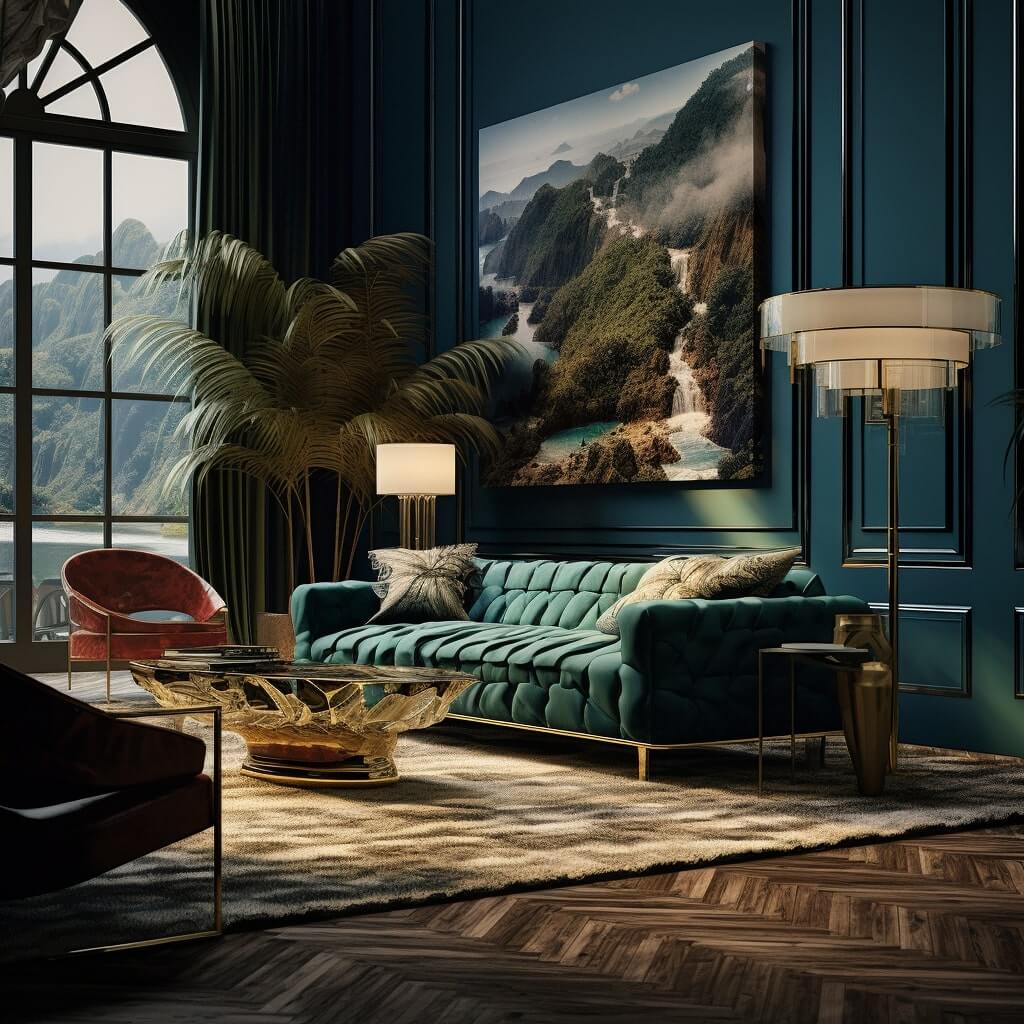

Incorporating Gradation in Interior Design: Tips and Tricks
Gradation is a powerful tool that can help you create visually appealing and harmonious interior spaces. To incorporate gradation in your design projects, consider these tips and tricks:
Select an Appropriate Color Scheme
Color is an essential element in creating gradation. Choose a color palette that gradually transitions from light to dark or from one color to the next. Consider using hues that complement each other and create a sense of balance within the space.
Play with Light and Shadow
The strategic use of lighting and shadow can create a visual sense of gradation. Use a combination of natural and artificial light sources to create depth and shadow. An overhead light can work in conjunction with task lighting and decorative lamps, for example.
Create a Sense of Scale
Gradation can also be achieved by varying the size of elements within the space. Using furniture and accessories of different sizes makes the space more interesting and dynamic. Varying the height of ceiling-mounted objects, such as pendant lights, can also create a sense of gradation.
Add Texture and Pattern
Texture and pattern can enhance the gradation effect by adding depth and interest to the space. Use textured fabrics or wallpaper, for example, to create a gradual transition from one element to the next. You can also use repetitive patterns that progress in size or color to create a sense of gradation.
Consider the Layout
The layout of elements within the space can also contribute to gradation. Arrange furniture and accessories so that they transition from one size or color to the next. Consider creating a focal point in the center of the room and arranging elements around it in a gradual transition.
Use Mirrors to Create Reflections
Mirrors can create reflections that enhance the sense of gradation in a space. Use mirrors strategically to reflect light and create a sense of depth and dimension. Mirrored surfaces on furniture and accessories can also contribute to the gradation effect.
By incorporating these tips and tricks, you can create a sense of gradation in your interior design projects. A gradual transition of size, color, and texture can create a sense of harmony and balance in any space.
FAQ: What Is Gradation in Interior Design?
Q: What is gradation in interior design?
A: Gradation in interior design refers to the subtle progression of elements within a space, leading the eye from one area to another. This can be achieved through various techniques such as size variation, color progression, and spatial arrangement. Gradation is an essential element in creating visually appealing, harmonious, and functional interior spaces.
Q: How can I achieve gradation in my interior design project?
A: Gradation can be achieved through careful selection of furniture placement, color schemes, lighting, and texture. Consider creating a color gradient, arranging items in order of size or height, and incorporating various textures to create a sense of depth. Lighting can also be used to create varying intensities of shadow and light for added dimension.
Q: What are the benefits of using gradation in interior design?
A: Gradation can create a sense of visual depth, balance, and harmony within a space. It can also evoke emotions and moods, depending on the color and texture choices. By using gradation techniques, you can transform a room from a simple functional space to a visually stimulating and inviting environment.
Q: Can I use gradation in any interior design style?
A: Yes, gradation can be applied to any interior design style, from modern to traditional, and in between in classic modern styles. It is a versatile technique that can enhance the aesthetic and functionality of any space. Consider adapting the techniques to suit the specific style and purpose of the room.
Apply Gradation Techniques to Your Next Project
If you’re looking to enhance the aesthetics and functionality of your next design project, consider incorporating the principles of gradation. From color gradation to strategic lighting and shadow play, there are numerous ways to create a sense of visual progression and harmony within a space.
By following the tips and techniques outlined in this article, you’ll be well on your way to creating a space that not only looks great but also feels great to be in. So start experimenting with gradation techniques today and unlock the secrets of beautiful interior design!
And learn about the 7 main principles of interior design too for more ideas.







